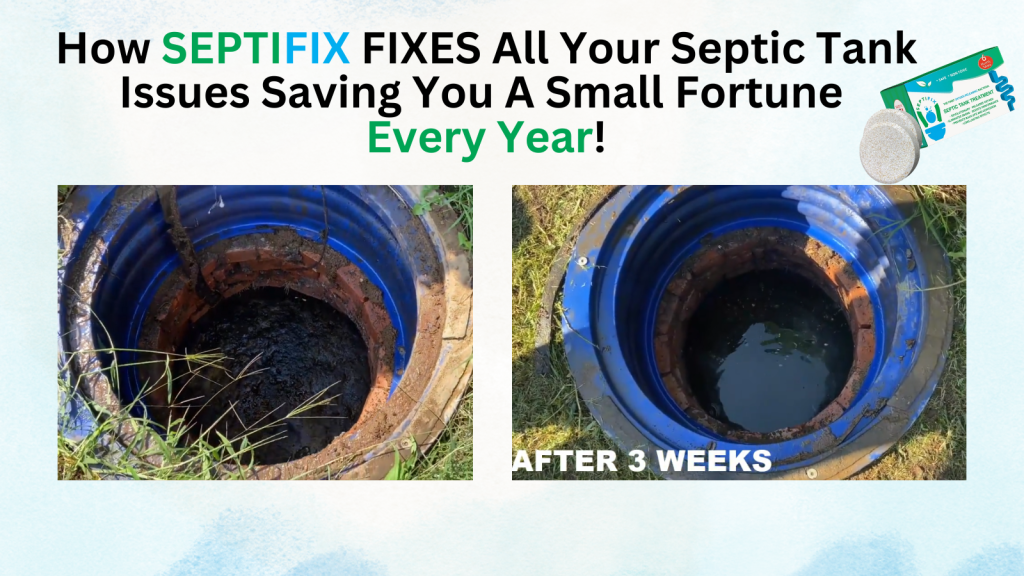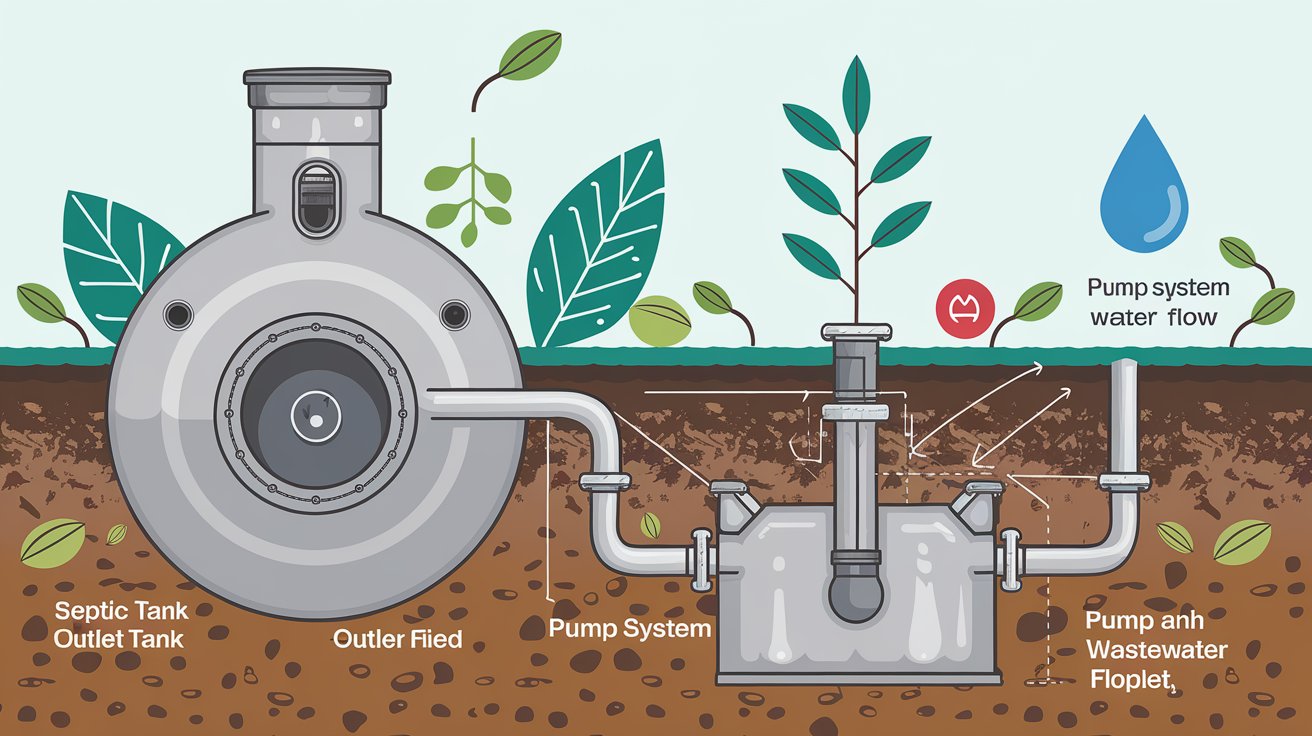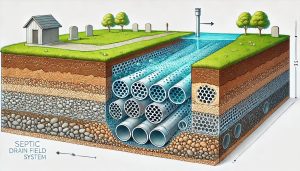When your septic system encounters issues, comparing repair and replacement costs is essential for making a smart decision. Septic systems are vital for managing wastewater, and maintaining them properly ensures the safety and functionality of your home.
This guide offers a detailed breakdown of the expenses for both repair and replacement. Understanding these costs, along with key influencing factors, will help you choose the most cost-effective solution for your system. Let’s explore the details to make an informed decision about comparing repair and replacement costs for your septic system.
Table of Contents
- Understanding the Scope of Repairs
- What Replacement Entails
- Comparing Costs: Repair vs. Replacement
- Factors Influencing the Decision
- Saving Money with Preventative Measures
- Frequently Asked Questions (FAQs) on Comparing Repair and Replacement Costs for Septic Systems
- Septic Permit Links by State
Understanding the Scope of Repairs
When it comes to septic system issues, repairs often offer a quicker and more affordable solution. Repairing your system can address common problems like clogged pipes, broken pumps, or minor drain field issues. These fixes can restore functionality without the expense of replacing the entire system.
The costs for septic repairs typically range from $200 to $1,500, depending on the severity of the issue. For example, replacing a damaged pump may cost around $500, while addressing drain field problems can go as high as $5,000. Factors like system size, age, and the extent of damage also influence repair costs.
Choosing repairs over replacement is ideal when the issue is localized and the rest of the system remains in good condition. However, repeated repairs on an aging or severely damaged system may lead to higher long-term expenses. Regular inspections can help identify problems early, reducing repair costs and prolonging the life of your septic system.
What Replacement Entails
Replacing a septic system is a more extensive and costly process compared to repairs. This involves removing the old system, preparing the site, and installing a new system. While the upfront cost is higher, a replacement provides a fresh start and eliminates recurring issues that repairs might not fully resolve.
The average cost of septic system replacement ranges from $7,000 to $25,000. Factors influencing these costs include the system type, site preparation needs, and local permit requirements. For example:
- Tank Size and Material: Larger tanks or advanced materials like concrete increase costs.
- Drain Field Replacement: Adding or redesigning a drain field may significantly raise expenses.
- Permit and Installation Fees: Local regulations often require permits, inspections, and expert installation, contributing to the overall cost.
Replacement is often necessary for aging systems beyond their lifespan or those with severe issues, such as complete drain field failure. While costly, it ensures a reliable, long-lasting solution, saving money on frequent repairs in the future.
Learn more about septic system replacement guidelines from the Environmental Protection Agency (EPA).
Comparing Costs: Repair vs. Replacement
Deciding between repairing or replacing a septic system depends largely on the associated costs and the condition of your system. Repairs often seem more affordable in the short term, while replacement offers a long-term solution for severe or recurring problems.
Here’s a quick comparison to help you assess both options:
| Aspect | Repair Costs | Replacement Costs |
|---|---|---|
| Average Cost Range | $200 – $5,000 | $7,000 – $25,000 |
| Timeframe for Solution | Days to weeks | Weeks to months |
| Lifespan After Fix | Varies, depending on system | 20+ years |
When Repairs Are Ideal:
- The issue is minor, such as a clogged pipe or broken pump.
- The system is relatively new and structurally sound.
- Costs are manageable, and repairs ensure optimal performance.
When Replacement Is Necessary:
- The system is outdated or beyond its lifespan.
- Major components, like the drain field, have completely failed.
- Repairs are frequent, adding up to significant costs over time.
While repairs offer a quick fix, replacement provides long-term reliability. Assessing your system’s age, condition, and repair history is critical in making the best decision. Consulting with a professional septic service provider can help determine the most cost-effective option for your situation.
Explore guidelines on septic system lifecycle from the National Environmental Services Center (NESC).
Factors Influencing the Decision
Choosing between repairing and replacing your septic system goes beyond just the price tag. Several key factors can significantly impact your decision, ensuring the solution is both practical and cost-effective.
1. Environmental Impact
- Repairing your system can extend its life, minimizing waste and reducing the environmental footprint.
- Replacement often involves upgrading to more efficient systems, which may better meet current environmental standards.
2. System Age and Condition
- A well-maintained system under 20 years old often benefits from repairs.
- Systems older than 25 years or with significant wear may be better suited for replacement.
3. Local Regulations and Permits
- Many areas require permits for septic repairs or replacements, impacting overall costs.
- Some regions have stricter guidelines for older systems, pushing homeowners toward replacement to meet updated codes.
4. Long-Term Budget Considerations
- Repairs may save money in the short term but can add up if issues persist.
- Replacing a system ensures a fresh start, potentially saving money on recurring repair expenses over the next two decades.
5. Financing Options
- Many companies and local governments offer financing or grants for septic system replacement, easing the financial burden.
When evaluating these factors, consider consulting with a septic professional. Their expertise can help you assess your system’s current state, estimate costs, and choose the best course of action.
Learn more about financing options for septic systems from the USDA Rural Development Program.
Saving Money with Preventative Measures
Whether you choose to repair or replace your septic system, regular maintenance is essential to avoid costly issues in the future. Preventative care can extend the life of your system and reduce the likelihood of expensive repairs or replacement.
1. Regular Pumping and Inspections
- Septic tanks should be pumped every 3 to 5 years, depending on system size and household usage.
- Routine inspections can identify minor issues early, preventing more extensive damage.
2. Mindful Water Usage
- Avoid overloading your septic system by conserving water. Use high-efficiency fixtures to minimize strain on the system.
- Stagger heavy water usage, such as laundry and dishwashing, to allow the system to process waste effectively.
3. Proper Waste Disposal
- Only flush septic-safe products to prevent clogs and damage to your system.
- Avoid pouring grease, chemicals, or non-biodegradable items down the drain.
4. Protect the Drain Field
- Keep vehicles and heavy equipment off the drain field to prevent soil compaction.
- Plant grass instead of deep-rooted vegetation near the drain field to prevent root interference.
5. Professional Maintenance Plans
- Many septic service providers offer maintenance plans, ensuring regular care and monitoring of your system.
- These plans can save money over time by addressing issues before they escalate.
By following these preventative measures, you can reduce the risk of costly repairs and extend the life of your septic system. Investing in routine care not only protects your system but also your wallet.
Read expert advice on septic maintenance from the National Onsite Wastewater Recycling Association (NOWRA).
Conclusion
When comparing repair and replacement costs for a septic system, the choice depends on several factors, including the system’s condition, age, and your budget. Repairs are often a quick and affordable fix for minor issues, while replacement becomes necessary for older or severely damaged systems. Although replacement is costlier upfront, it provides a long-term solution, reducing recurring expenses over time.
To make an informed decision, consider factors like local regulations, environmental impact, and long-term savings. Regular maintenance and preventative measures can also help extend your system’s life and reduce the need for either repairs or replacement.
Need help maintaining your septic system? Explore our resources and expert tips to protect your investment and avoid unexpected expenses.
Frequently Asked Questions (FAQs) on Comparing Repair and Replacement Costs for Septic Systems
What factors influence the cost of repairing a septic system?
The cost of repairing a septic system depends on factors such as the type and extent of the damage, the system’s age, and local labor rates. Minor repairs, like unclogging pipes, are generally less expensive, while more extensive repairs, such as replacing a drain field, can be significantly costlier. (houselogic.com)
How much does it typically cost to replace a septic system?
Replacing a septic system can be a substantial investment. Costs vary based on factors like system size, soil conditions, and local regulations. On average, homeowners can expect to spend between $7,000 and $25,000 for a complete replacement. (houselogic.com)
Are there financing options available for septic system repairs or replacements?
Yes, several financing options may be available to assist with the costs of septic system repairs or replacements. Local health departments or environmental agencies often offer low-interest loans or grants. Additionally, some municipalities provide financing programs to help homeowners manage these expenses. (epa.gov)
How can I determine whether to repair or replace my septic system?
Deciding between repair and replacement depends on factors such as the system’s age, the severity of the issue, and the cost of repairs. If the system is relatively new and the problem is minor, repair may be the best option. However, if the system is old or the issues are extensive, replacement might be more cost-effective in the long run.
What are the environmental implications of repairing versus replacing a septic system?
Repairing a septic system can be environmentally beneficial if it restores the system to proper functioning, preventing contamination of groundwater and surface water. However, if the system is beyond repair and poses environmental risks, replacement may be necessary to ensure safe wastewater treatment.
How can regular maintenance help reduce the need for costly repairs or replacements?
Regular maintenance, such as routine inspections and pumping, can identify potential issues early, allowing for timely repairs that prevent more extensive damage. Proper maintenance extends the lifespan of the septic system and reduces the likelihood of costly repairs or premature replacement. (houselogic.com)
Septic Regulations in Rural Areas: Essential Guide for Rural Property Owners
The Role of Perforated Pipes in Drain Fields
What Happens During a Pumping Service?
Septic Tanks vs. Sewer Systems | Choosing the Right Option
Directory | Virginia Septic Service Providers | Part 2
Directory | Virginia Septic Service Providers : Best Professionals | Part 1
Septic Treatments for Odor Control: Best Methods for Eliminating Unpleasant Smells
How to Maintain a Healthy Bacteria Balance | Tips to Ensure Your Septic System Has the Right Microbial Environment









